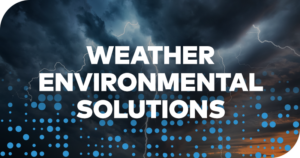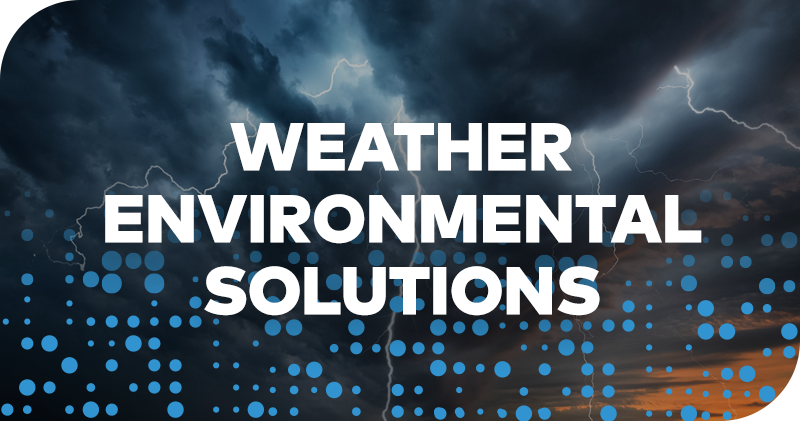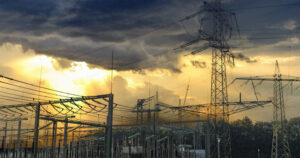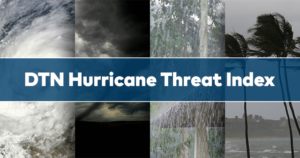The Impact of Severe Weather on Live Events

Planning an outdoor live event is no small feat. There are hundreds of details to plan to ensure a safe and successful event. However, one of the most important plans that must be in place deals with severe weather.
Severe weather is any event in which the environment is severely impacted by what are typically considered extreme conditions. Defined further below, tracking and planning for severe weather can quite literally save lives.
WeatherSentry Public SafetyEdition has industry-leading insights to track and prepare for severe weather. Obtain real-time actionable insights from meteorology consultants and know what is coming up to 36 hours out.
This article will define common types of severe weather, what differentiates poor weather from harsh weather, and how it may affect your event.

Planning for severe weather
There have been examples of concert-goers being struck by lightning and becoming severely injured. However, there are also success stories of how having a plan can protect attendees in severe weather.
In 2012, the Lollapalooza festival was held in Grant Park in Chicago. However, the weather turned, resulting in torrential rain, lightning, and wind speeds of over 70 mph. So what happened to the 60,000+ concert-goers?
The concert was delayed for 2.5 hours. Volunteers and staff were able to direct them to three pre-designated shelters, and no injuries were reported. What could have been a tragedy was avoided because of proper planning.
To plan for severe weather, you need to know what you are facing. So how can you accurately forecast the weather your event might encounter?
What is severe weather?
Severe weather is defined as any hazardous meteorological condition that can cause severe damage to people, places, and things.
If that definition seems all-encompassing, that’s because it is. Many dangerous weather conditions can affect your live event, and are broken out in more detail below.

Common types of severe weather
Given the broad definition outlined above, this article will look at different types of severe weather. It will also examine the threshold in each case that defines severe weather instead of just poor weather.
The most common types of severe weather include:
Severe thunderstorms
Thunderstorms are one of the most common types of weather threats facing live events. These storms come with several risks, including lightning strikes, hail, and flooding.
There are thousands of thunderstorms each year, yet only around 1% qualify as “severe.” What is the threshold for a severe thunderstorm? It must meet the following criteria:
- strong winds at least 58 mph (or ~93 km/h); and/or
- hail at least 1″ in diameter (roughly the size of a quarter).
The National Weather Service recently released updated threat levels for severe thunderstorms ranging from “baseline” to “destructive.” At the highest level, destructive thunderstorms will have wind speeds of 80+ mph and produce hail that is 2.75″ in diameter.
Flash flood
A flash flood is defined as a flood caused by either excessive rainfall within less than 6 hours or a dam burst. Depending on where your venue is located, heavy rain could quickly turn into a flash flood.
Lightning
While typically associated with thunderstorms, lightning can strike anytime and anywhere. With the combination of electrical equipment and wide-open spaces, lightning can easily result in injuries and even death.
Hail
Large hail can cause significant damage to a venue. Hailstones have been reported as large as softballs and weighing up to two pounds! The resulting force from such heavy objects crashing down onto what is below can be catastrophic, leading to significant injuries or even fatalities if not adequately prepared for this type of weather.
Tornadoes
A tornado is a fiercely rotating column of air that extends from the base of cumulonimbus clouds to the ground. Tornadoes are typically classified as weak, moderate, or firm based on their wind speeds. Tornado warnings are essential to determine the severity of a tornado, along with its forecasted path.
Extreme heat
The combination of heat, humidity, and being outside for prolonged periods is a recipe for disaster. Extreme heat is the number one weather-related cause of death in America, according to the National Weather Service. For your event, you can anticipate higher instances of heatstroke and other illnesses.
Hurricanes and tropical cyclones/storms
Hurricanes and tropical cyclones are large rotating storms that form over oceans, typically between five degrees north of the equator to twenty-five degrees north. Hurricanes are marked by gale-force damaging winds that circumnavigate a relatively calm eye of the storm.
As hurricanes move inland, they lose strength and transition to tropical storms and then depressions as wind speeds fall below 74 miles per hour. Therefore, if your event occurs during hurricane season – typically June through November – you should closely monitor weather forecasts.

Severe weather and live events
For those who have been planning events for years, this may seem a little “Weather 101”. However, with climate change affecting the weather, there is expected to be an increase in the frequency and severity of extreme weather.
The type of weather that you may have faced in the past may not be what you face tomorrow. In addition, specific weather events may be more severe than you have faced in your career.
Look no further than the record heat waves in British Columbia in the summer of 2021. While there have been heatwaves in the past, this particular round resulted in the deadliest weather event in Canada’s history with many losing their lives.
It is crucial to look at real-time weather data to determine your safety plan for your event. Use this data to determine if it is safe for your attendees to attend the event and define what precautionary measures should be taken.
Accurate and real-time data
A safe event requires a thorough, comprehensive plan. That plan can only be created by having accurate information that you can trust.
WeatherSentry Public Safety Edition provides that information and allows you to make those plans confidently, no matter what Mother Nature throws your way.
See the path ahead as WeatherSentry shows you where severe weather is headed over the next 30 minutes. Know when to mobilize your staff and where to keep your attendees safe before, during, and after severe weather. Learn more today about how you can make better-informed decisions for various scenarios.











 Comprehensive weather insights help safeguard your operations and drive confident decisions to make everyday mining operations as safe and efficient as possible.
Comprehensive weather insights help safeguard your operations and drive confident decisions to make everyday mining operations as safe and efficient as possible. Learn how to optimize operations with credible weather and environmental intelligence. From aviation safety to environmental compliance, our comprehensive suite of solutions delivers real-time insights, advanced forecasting, and precise monitoring capabilities.
Learn how to optimize operations with credible weather and environmental intelligence. From aviation safety to environmental compliance, our comprehensive suite of solutions delivers real-time insights, advanced forecasting, and precise monitoring capabilities. 

